Croatian (wine) Journal, Part II
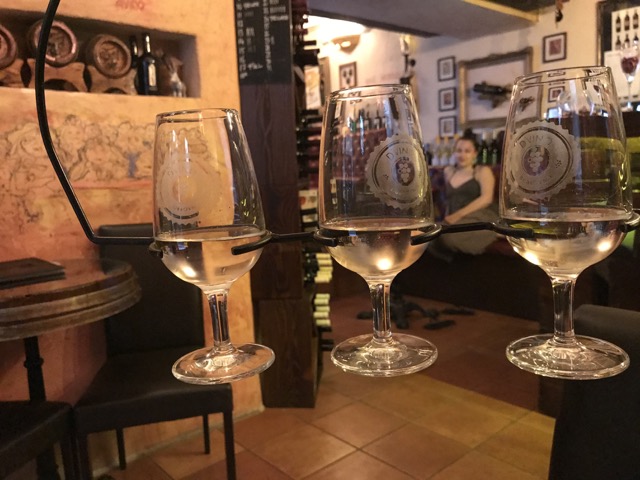
White wine pleasure in Dubrovnik
20 August 2018
By Panos Kakaviatos for Wine-Chronicles.com
After spending a few days at the charming waterfront harbor resort of Cavtat – see Part I – I took a picturesque boat journey to Dubrovnik, which is the focus of this second part of my Croatia summer blog wine chronicle.
As one writer had already noticed over 10 years ago, Cavtat is ideally located should you want to visit Dubrovnik. The one-hour boat ride alone is worth the $15 round trip ticket.
Gorgeous seascapes include little islands and many boats, from large sailing vessels to luxury yachts. You could take a cheaper bus, but then you would not get off directly in the center – and the ride is not as charming.
Arriving at the dock, medieval walls surrounding narrow Venice-like pathways look gorgeous. It is easy to see why Dubrovnik has been a UNESCO World Heritage site since 1979.
Thanks to restoration of damage caused by war following the break up of the former Yugoslavia, Dubrovnik has re-emerged as a top tourist destination in the Mediterranean. More recently it is the theme of Game of Thrones tours… but let me get to the wine angle ?.
Meeting Croatia’s Best Sommelier
My first wine meeting there was with recently named “Best Sommelier of Croatia” Siniša Lasan, who found time from his busy summer schedule to chat with me about Croatian wines. He has been working for the past four years at the oldest fine dining restaurant on Dubrovnik: aptly named Protos, which is Greek for “first”. Established in 1886, the restaurant is located at the intersection of Široka and Vara streets, a short walk from the port. I did not get a chance to visit the restaurant, but we met at a café to talk about Croatian wine.
The EU has helped Croatian wine production with subsidies, Lasan says. He was in Brussels in February this year with a group of winemakers who did a wine tasting for some MPs among others. Keep greasing those wheels.
Prices vary throughout Croatia and Dubrovnik counts among the highest priced parts of the country. Indeed, as this “Croatia Expert” guide explains“ the highest prices you can expect to find are in top tourist areas, like Istria, Dubrovnik and the islands”, while cheapest prices are in the mainland, and in smaller Dalmatian cities. Slavonia, another wine growing region further inland, is “crazy cheap”, Lasan says.
Lasan, who has been judging for the Decanter World Wine Awards in London for the past four years, answered some of my questions.
How are Croatian wines?
“They are getting better and better”, he says. “We won’t ever be a big wine producer like France, but we have a long history of winemaking – as in Greece”.
Croatia has deep wine roots, he says, pointing out that wine artifacts from several centuries B.C. indicate plantings of a grape today known as Grk, originating from vines that the Ancient Greeks planted on the island of Korčula – and where it is still being produced. Grk is noted for its slightly bitter after-taste and its hermaphrodite character: it only has female flowering parts. The largest island of the Dubrovnik-Neretva Region, Korčula belongs to the central Dalmatian archipelago, separated from the Pelješac peninsula by the Strait of Pelješac.
How many grape varieties?
Croatia boasts over 130 varieties, Lasan says, referring to Wine Grapes, the famous book by Jancis Robinson, Julia Harding and José Vouillamoz. One of the whites I tried later is made from the grape called Pošip (pronounced poship). It depends on the producer, but good Pošip tends to be tropical on the nose, but fresh and dry on the palate. It tends to have higher alcohol, between 13.5 or even 14, but goes well with fish, Lasan says.
What about international varieties?
Merlot and Sauvignon Blanc are also grown in Croatia, for example. As for the latter: “We are not quite at the level of Slovenian Sauvignon Blanc to sell internationally, but we are getting there”.
Northern Croatia is “like the California of Croatia”, because one can find “really nice Cabernets, Syrahs and Merlots, but also indigenous grapes like Lassina and Babić”, he adds. “Here, you get full bodied, ripe and fruit-forward reds because it is a hotter region”.
Any sparklers?
As we already discovered in Part I on Cavtat, the region of Plešivica, close to Zagreb, is called “small Champagne” because of traditionally made sparkling wines there. It is a continental wine region located about a one-hour drive away from Zagreb. There are about 2,300 hectares of vineyards.
Istria is an excellent region, too, he said. “Maybe you can find the best quality wines here”. Furthermore, the war did little damage there. It is known for indigenous grapes like Malvazija Istriana (see below) and Teran.
What about Plavac Mali?
“It is he most important indigenous red variety, that is both heavy and tannic”, Lasan said. Grown along the Dalmatian Coast, it is a cross between Crljenak Kaštelanski (ancestral Zinfandel) and Dobričić grapes.
The name refers to the small blue grapes that the vines produce: in Croatian “plavo” means blue and “mali” means small. Common flavors and aromas include blackberries, dark cherries, pepper, and spices, but I did not taste any on this trip (I did buy a bottle at the airport, however, and I will try it when the summer heat wave is over).
Known for producing rich, flavorful wines high in alcohol and grape tannins, acidity can be a problem, Lasan says. “They cannot pick too early as the grape would not be phenolically ripe. “This year may be the earliest harvest on modern record”.
How many vines in production?
Croatia has about 22,000 hectares of vineyard, but it was “nearly double” at the end of the 19thcentury: the phylloxera epidemic also affected Croatia, Lasan stresses. But sandy soils however on Korčula protected Grk. I hope to visit that island on my next visit to Croatia.
Who is drinking Croatian wine?
Tourists, he says.
“We sell almost 95% of Croatian wines in Croatia, particularly the good ones. It is harder to export the wines, even if winemakers sometimes want to export”. Factors include hard-to-pronounce grape varieties and place names, but one can find Croatian wines in international markets, including one of my favorite local Washington D.C. wine shops, MacArthur Beverages, with no less than four wines on offer.
Value for money?
It depends on whom you ask, says Lasan. For most tourists, price/quality ratio is “not really a hallmark here” as many tourists expect wines under €10 per bottle. But a fine bottle of wine will cost “at least €15 per bottle retail”, he says. “Tourists often think that here everything should be cheap, but Dubrovnik is one of the most expensive cities in Europe”.
Wine education
Lasan, who is 40 years old, seems a tad frustrated when talking about education. He has spent already five years in Dubrovnik and is trying to get hotel owners and restaurant owners to think more in terms of quality wine and food pairings. “We are going forward, but it seems that there are not enough people to push in that direction”.
He calls on young people to study more about food and wine: “You need to study; you need to know food and about wines also, because that is how you sell wines to (increasingly wine savvy) foreign citizens”.
So Lasan brings up the example of needing to know which Croatian wine would best represent the taste of a wine consumer who is not familiar with Croatian wines: “I would ask a client ‘what kind of wine do you drink at home’, and if he would say ‘white Burgundy’ than I would have an idea of where to go”. So which wine would Lasan recommend for example? “You need to go inland, on mountainous terrain and cooler climates, and a producer like Vlado Krauthaker”.
He also recommends “for this summer heat” wines from sub-region of Međimurje because of their “minerality, freshness and low alcohol” including grape varieties of Pušipel and Sauvignon Blanc.
Tasting at D’Vino Wine bar
At D’Vino Wine Bar, which is down the street from the port, I asked for a wine that would be crisp and cool, like Chablis. And I liked what was served: a Croatian Chardonnay, from inland Slavonia, by Buhač Wines. Dry and quite fresh: a “clean” expression of the grape, even if the texture is creamier and thicker than most Chablis. A fine white for the summer for €5 per glass, it offers underlying seriousness as well. Apparently the producer makes one of the “best-value-for-money-wines” in Croatia, D’Vino representative Toni Dugandzic says.
D’Vino celebrates its 10-year anniversary in 2018 as Dubrovnik’s first wine bar. Toni, 36, has been working here for half that time, and he knows his wines.
I was also in the mood for a bright sparkler, so Toni pulled out a glass of Tomac Millennium, made in the Méthode Traditionelle, or Champagne method. A blend of 30% Chardonnay and 70% “of all sorts of indigenous grapes from Plešivica (pronounced plesivicha)”, Toni said, it showed fine bead, with freshness and some vivacity.
For a retail price of €12 ($11), this is a pretty good deal. The by-the-glass price at the wine bar was about €6.50, which goes to show that Dubrovnik is indeed not too cheap.
Even though I was taking vacation days, I was on a deadline to write an article for Decanter Magazine on another subject, and the wine bar was cozy and quiet that afternoon, so I sipped on another glass of that bubbly, writing notes for the article before taking a break from that work for a white wine flight. I highly recommend D’Vino Wine Bar because of its easy going ambiance and the excellent knowledge its management conveys.
White Wine Flight
Being summer and hot, I focused on white wines from this bar. The wine list is encyclopedic: a thick book with only wines from Croatia. Very impressive indeed! So we went for a flight of three, plus a special wine.
That special wine was none other than the Grgić Pošip 2017, made by the same Napa Valley star, Miljenko “Mike” Grgich, who first earned worldwide recognition when his Napa Valley Chardonnay vintage 1973 won at the 1976 Paris Tasting, beating the best of France.
While that 1973 Chardonnay is on display at the Smithsonian National Museum of American History in Washington D.C., a more recent Croatian TV documentary about his life, “Like the Old Vine” stresses the fact that he is making fine wines in his home country.
One such fine wine is this Pošip, that exudes an almost herbal aspect with a moderately thick texture on the palate. There is some oak aging but not more than two months in barrel, Toni says. I was surprised that the wine clocks in at 14% alcohol, because it tastes fresher than that would suggest: certainly one does not feel heat.
I bought a bottle at the airport for €29, and I look forward to sharing with some wine loving friends. The wine bar price of €40 may sound steep, but it is a very good wine, and I could easily spend that money to share with friends.
More about Pošip
It is an indigenous Croatian variety developed through spontaneous crossing between two varieties from the island of Korčula. This white wine grape variety has been grown for centuries in Croatia on several islands and along the Dalmatian coast, where cool Adriatic Sea winds maintain good temperatures for white grapes even if the islands can be very hot.
But I was not as thrilled with the evidently oaky Pošip of the same vintage from Saints Hills’ Vineyards. It is very smooth but I could not get over the oak influenced banister notes. And it ain’t cheap at €35.
We also enjoyed a Grasevina, again by Buhač Wines, from the 2016 vintage, which – as we saw in Part I on my Croatian summer adventure – is Welsh Riesling. The least expressive of the flight, but smooth enough. And this particular bottle is D’Vino’s house wine. The wine bar price is decent enough at just under €17 per bottle.
Finally, I very much enjoyed the Malvazija from Ritoša Vineyards, as it exuded freshness and maybe it was the most easy drinking of the four. Showed off some white flower aromas as well as citrus fruit. The wine bar price is just under €27 but you can find it at retail for about €17.
All these wines were especially tasty with young goat cheese, ginger and gluten-free sweet mango chutney.
Conclusions
Croatia, I am coming back!
I was very impressed with both Cavtat (see Part I) and Dubrovnik. And because of my other work, I did not have the time to dine at Protos Restaurant or revisit D’Vino Wine Bar, but that is going to happen on my next visit.
Category: Blog Tagged: Croatia, D’Vino Wine Bar, Dubrovnik, Grasevina, Korčula, Mike Grgich, Pošip, Siniša Lasan, Tomac Millennium
 Wine Chronicles
Wine Chronicles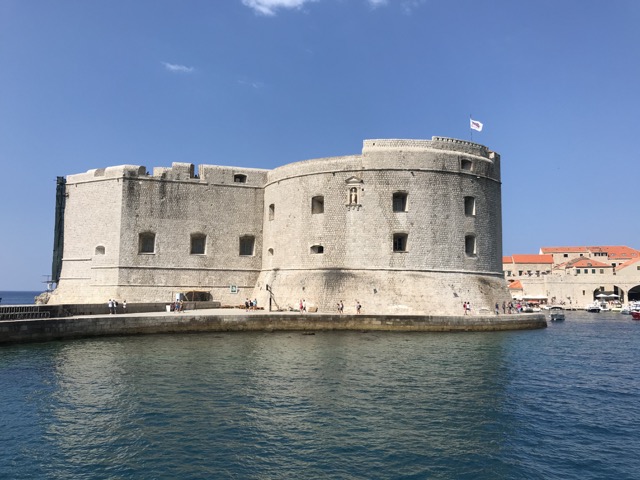
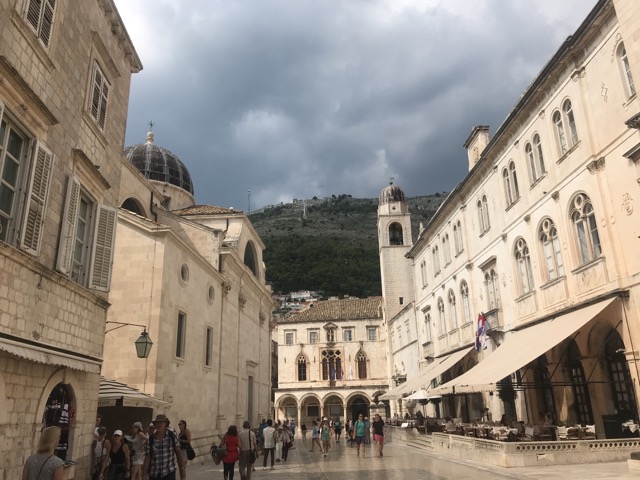
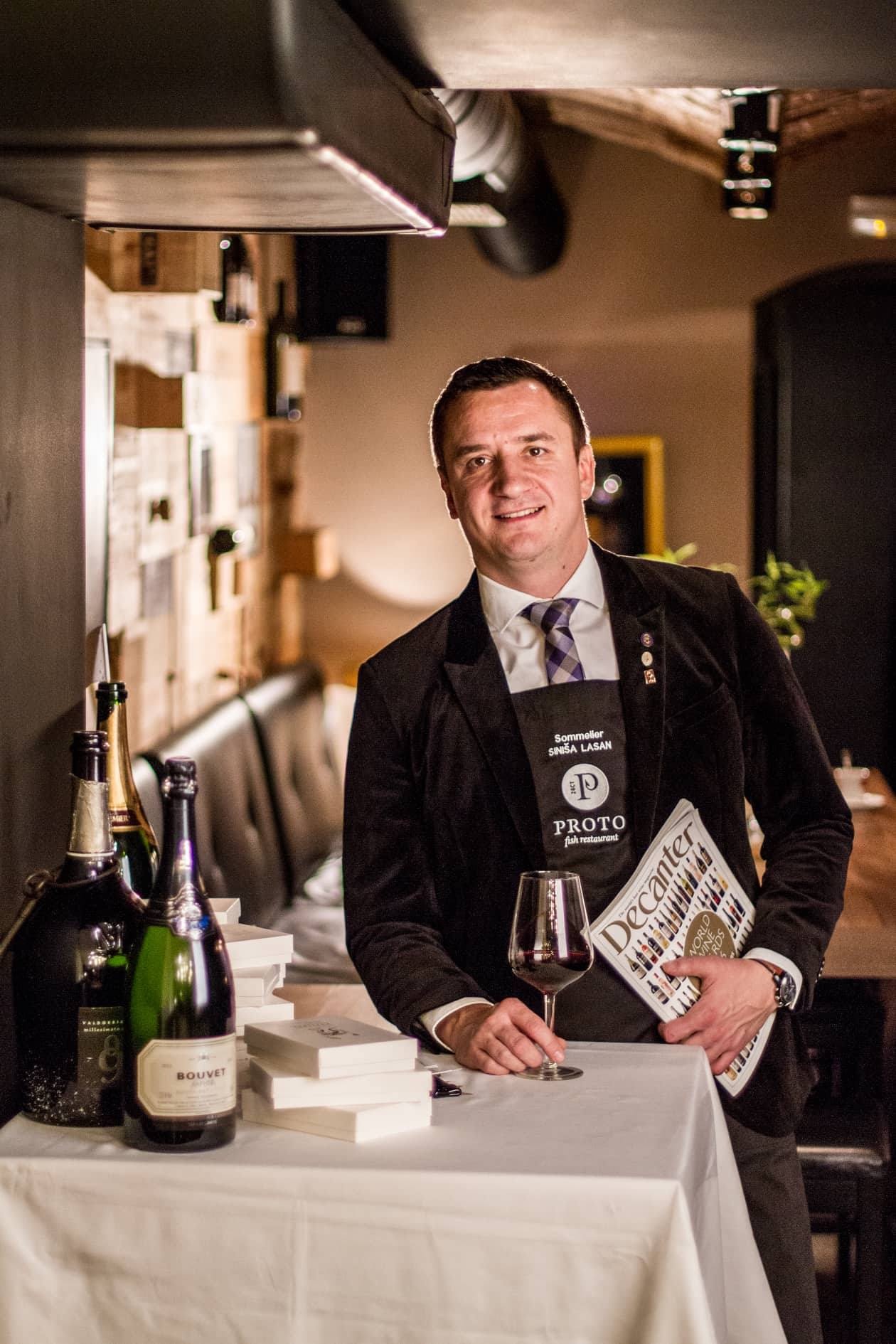
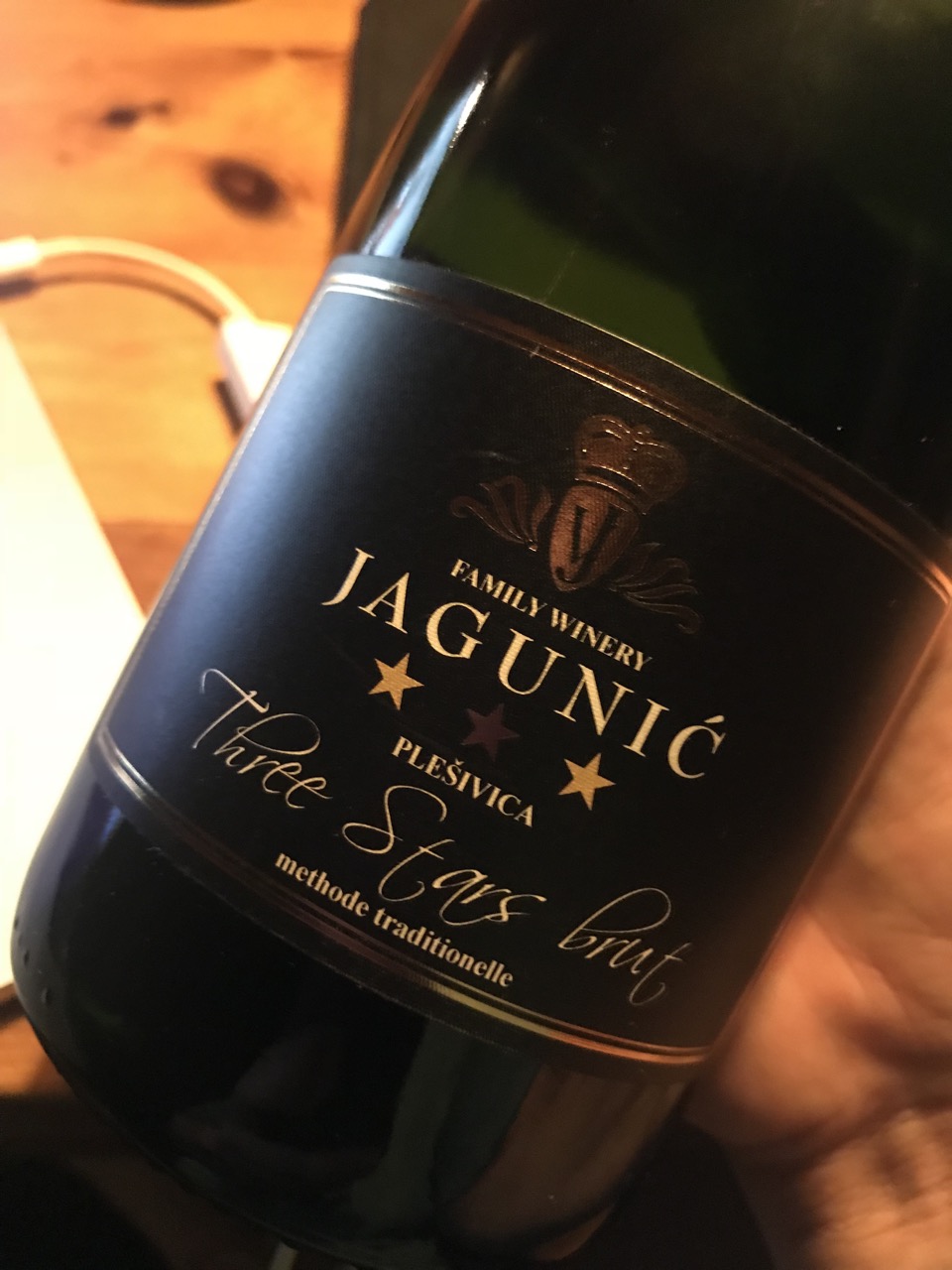
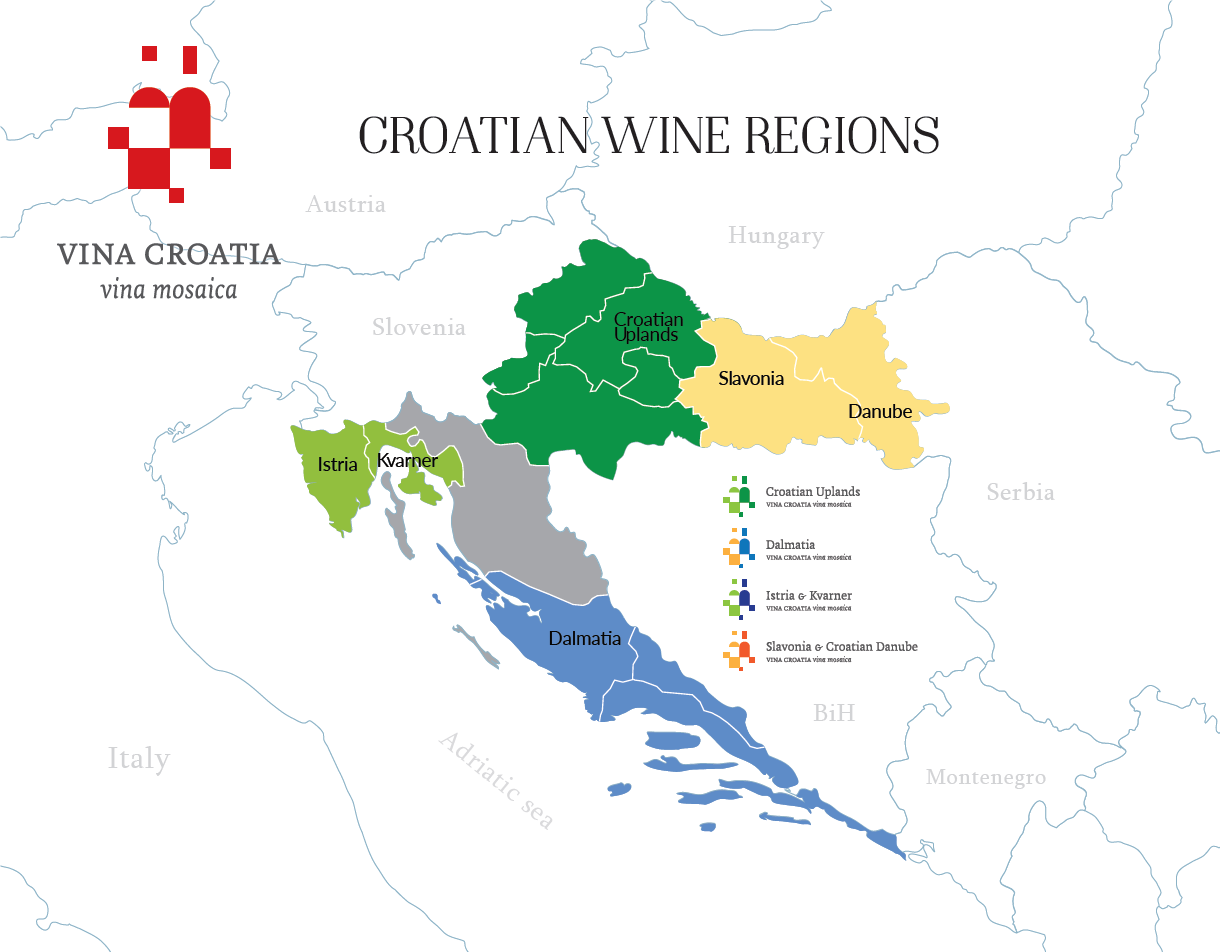
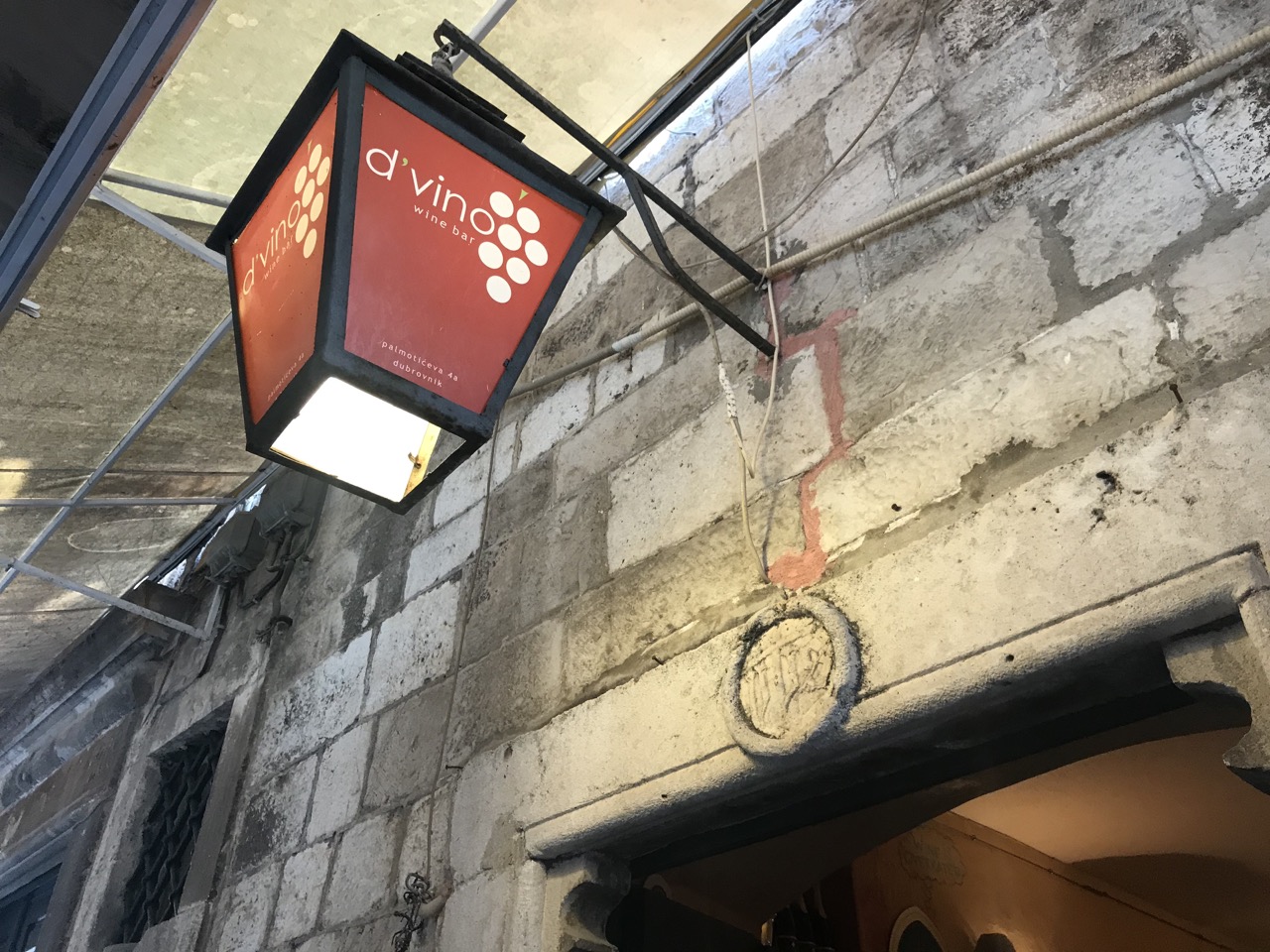
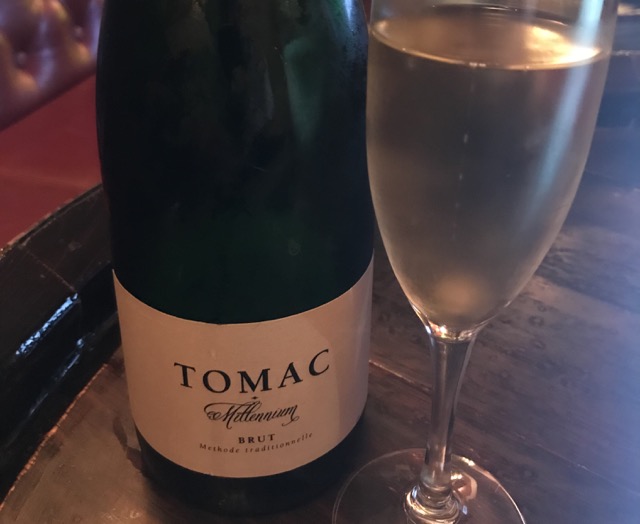
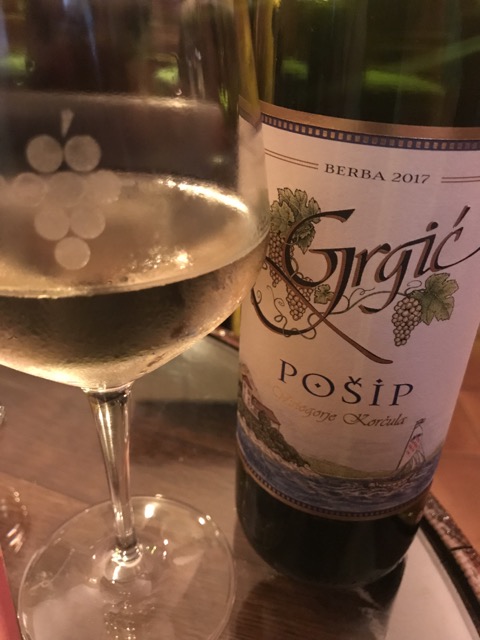
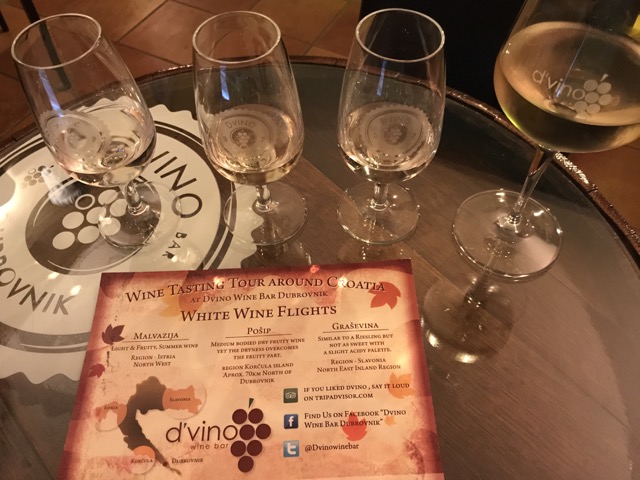
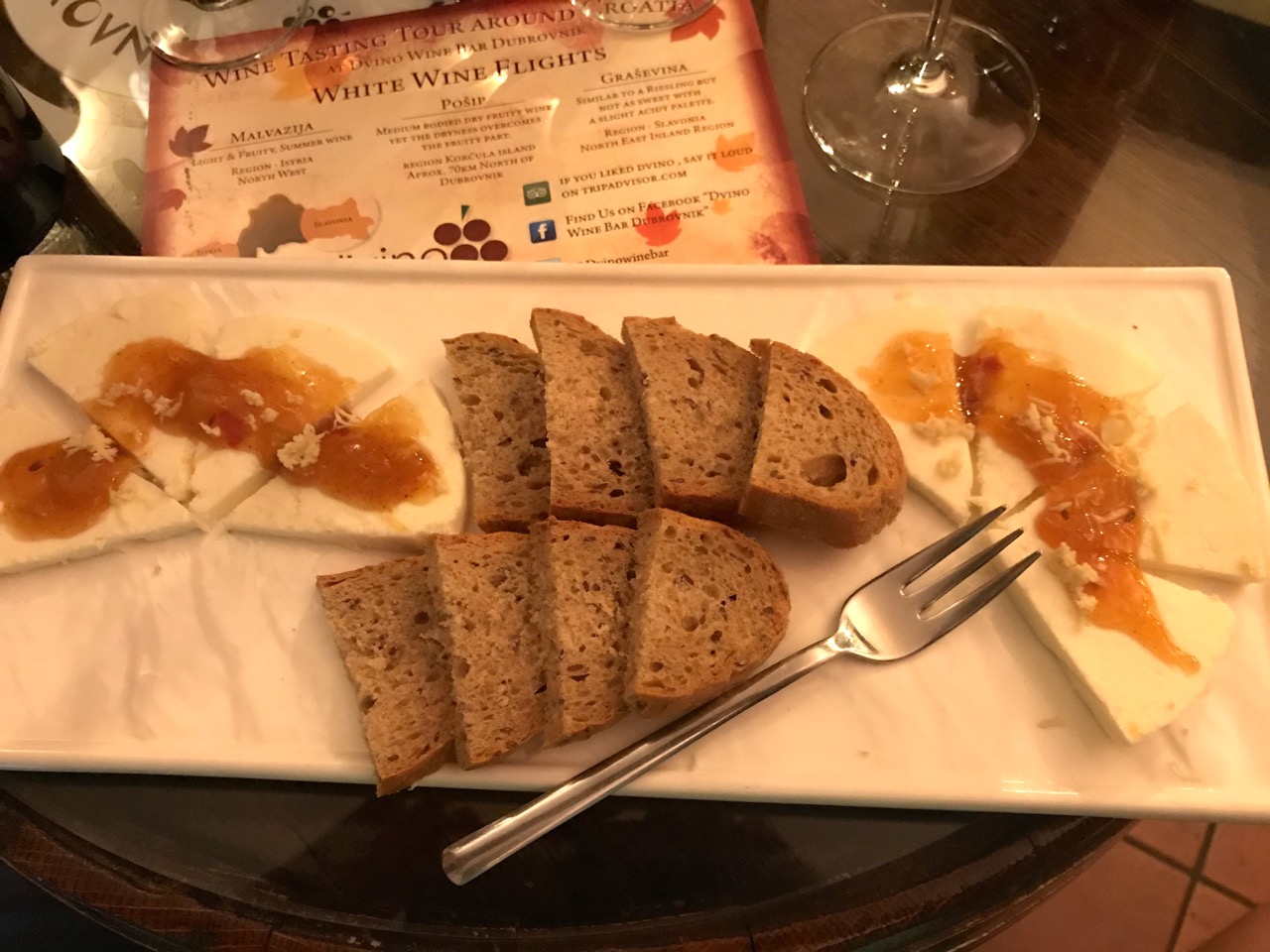

Share This